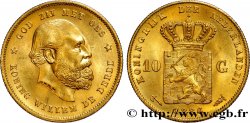Live auction - fwo_604401 - ITALY - KINGDOM OF SARDINIA - CHARLES-FELIX 80 Lire 1828 Gênes
You must signin and be an approved bidder to bid, LOGIN TO BID. Accounts are subject to approval and the approval process takes place within 48 hours. Do not wait until the day a sale closes to register. Clicking on "BID" constitutes acceptance of the terms of use of cgb.fr private live auctions.
Bids must be placed in whole Euro amounts only. The sale will start closing at the time stated on the item description; any bids received at the site after the closing time will not be executed. Transmission times may vary and bids could be rejected if you wait until the last second. For further information check the Live auction FAQ
All winning bids are subject to a 18% buyer’s fee.
All winning bids are subject to a 18% buyer’s fee.
| Estimate : | 1 800 € |
| Price : | 1 250 € |
| Maximum bid : | 1 250 € |
| End of the sale : | 08 September 2020 18:50:11 |
| bidders : | 4 bidders |
Type : 80 Lire
Date: 1828
Mint name / Town : Gênes
Quantity minted : 8961
Metal : gold
Millesimal fineness : 900 ‰
Diameter : 33 mm
Orientation dies : 6 h.
Weight : 25,81 g.
Edge : inscrite en creux lacs d'amour et FERT FERT FERT
Coments on the condition:
La monnaie présente des petites porosités dans le métal sur le buste et a été nettoyée. Plusieurs coups sur la tranche
Catalogue references :
Obverse
Obverse legend : CAR. FELIX D. G. REX SAR. CYP. ET HIER./ 1828.
Obverse description : Tête nue de Charles-Félix à gauche ; signé A. LAVY en relief sur la tranche du cou.
Obverse translation : (Charles Félix par la grâce de Dieu, roi de Sardaigne, de Chypre et de Jérusalem).
Reverse
Reverse legend : DVX SAB. GENVAE ET MONTISF. PRINC. PED &/ L.80. (TÊTE D'AIGLE).
Reverse description : Écu couronné entouré du collier de l'Ordre de l’Annonciade entre deux branches de chêne.
Reverse translation : (Duc de Savoie, de Gênes et Montferrat, prince du Piémont).
Commentary
Ce type est fabriqué suite à la patente du 3 décembre 1821 et au décret du 14 décembre 1821. La pièce est démonétisée par la patente du 8 juin 1832. Les pièces ont été frappées dans les ateliers de Turin et de Gênes.








 Report a mistake
Report a mistake Print the page
Print the page Share my selection
Share my selection Ask a question
Ask a question Consign / sell
Consign / sell
 Full data
Full data















